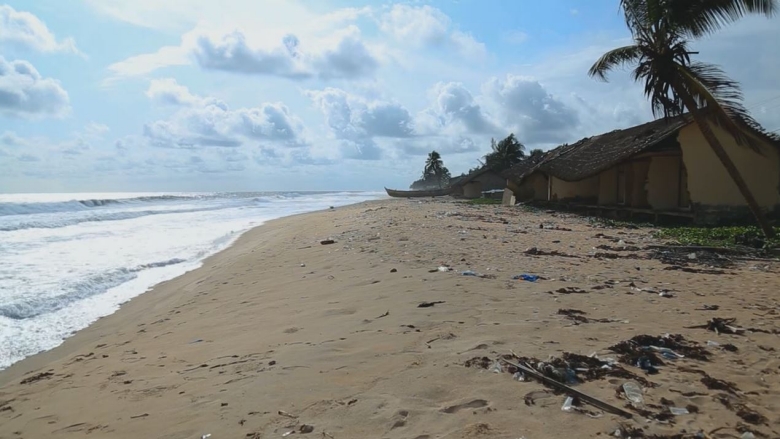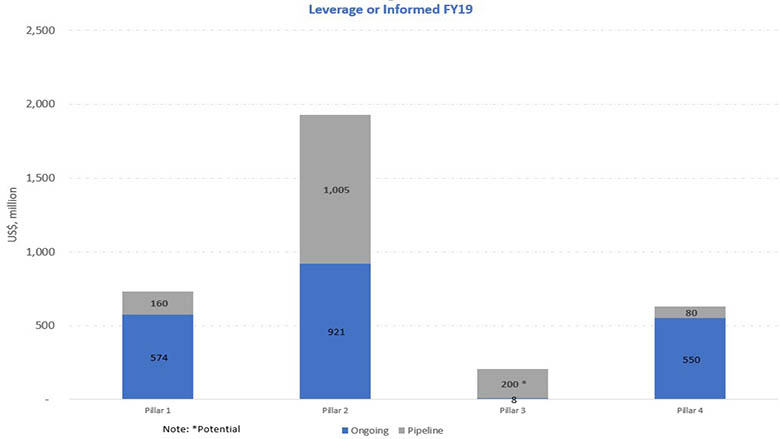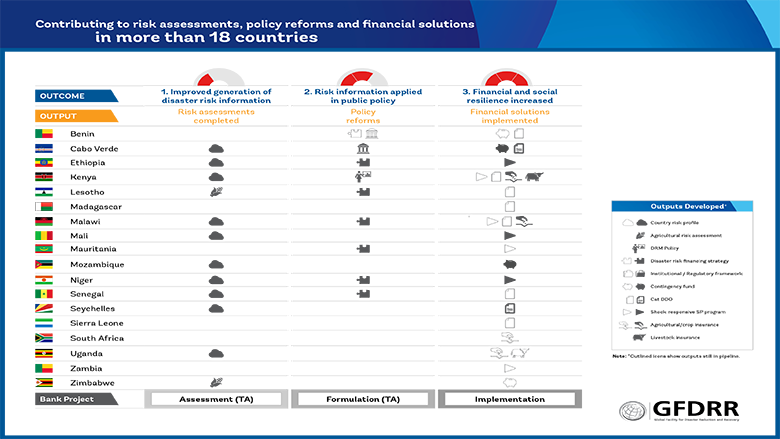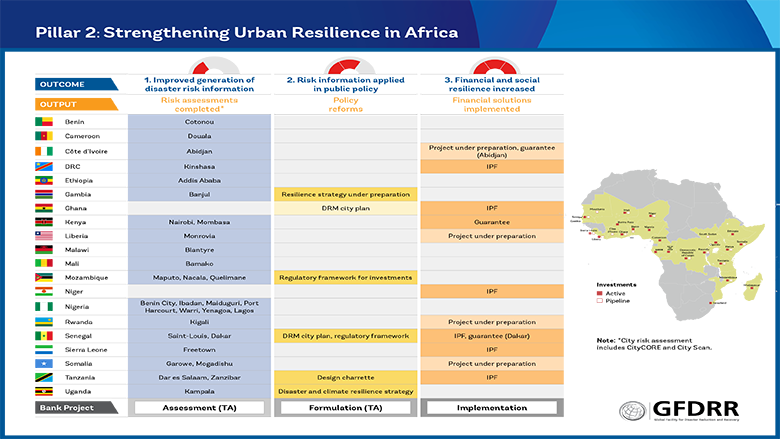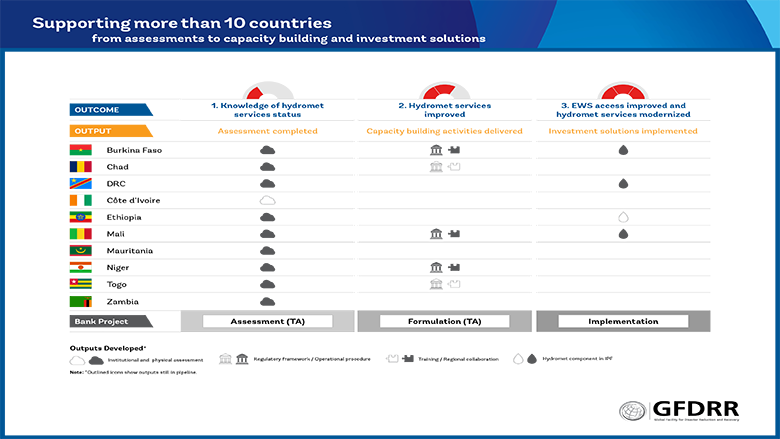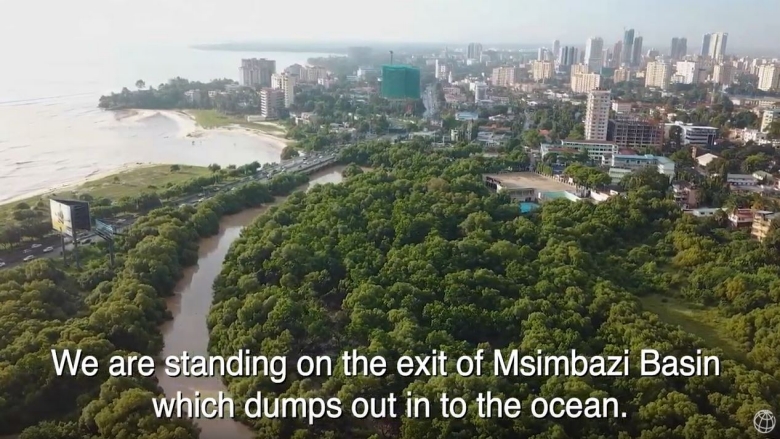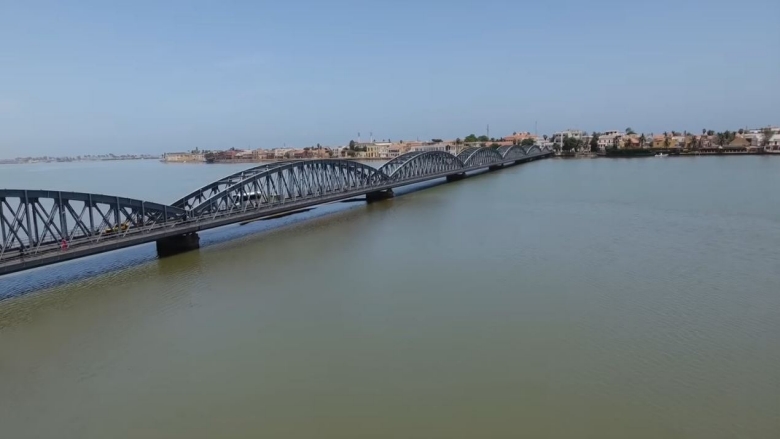CONTEXT:
Africa has made notable progress in the last three decades. Life expectancy has risen steadily, school enrollment has grown, and carbon emissions have steadily remained well below global averages.
Amidst these achievements, managing disaster risks and urban challenges is key to ensuring that Africa’s development achievements are not lost when disasters hit. About 90% of all disasters in Africa are weather and climate driven. By 2030, up to 118 million extremely poor people in Africa, living on less than $1.25 a day, will be exposed to cyclones, drought, floods, earthquakes, extreme heat and extreme weather conditions.
The World Bank, Global Facility for Disaster Reduction and Recovery (GFDRR) and partners are working with African governments and communities to build resilience in key urban and rural areas throughout the continent. The objective is to assist Africa in taking positive steps toward reaching its growth potential, scaling up its economic achievements, and fostering resilience against climate, urban and disaster risks.
RESPONSE:
Africa’s growing population and urbanization presents an opportunity for a turning point towards equitable growth and progress. With evolving demographic growth and Africa’s urbanization rate, about 70% of Africa’s urban areas and cities are yet to be built. It presents opportunities for the private and public sectors to collaborate and invest in people, communities and cities—but cities must be well managed to attract private capital.
The Africa DRM program sought to primarily implement activities under a regional approach. The program or strategy is aligned with World Bank Corporate Initiatives such as: the World Bank Group’s Climate Change Action Plan 2016-2020, the Africa Climate Business Plan (ACBP) and the Action Plan on Climate Change Adaptation and Resilience.
The PA contributes to:
- Protect the government fiscal situation, reduce welfare and asset losses through contingent credit lines. These credit lines facilitate key policy and institutional reforms for integrating disaster and climate resilience into government’s development processes.
- Plan the fiscal response through the implementation of financial instruments that guarantee immediate liquidity to address shocks related to natural disasters.
- Increase resilient investments of national and local governments. Under the City Resilience Program (CRP) and Open Cities Africa , the team works on resilience planning and capital mobilization. Meanwhile, the GFDRR CityCORE Africa initiative supports scaling up World Bank engagements with coastal cities in Sub-Saharan Africa.
- Encompass technical and policy level advisory services at the regional level through the Africa Hydromet Program. In partnership with the World Meteorological Organization, GFDRR continues strengthening the analytical underpinning for modernized hydromet services and providing capacity building and enhancing regional knowledge on weather and climate related hazards.
Last Updated: Mar 03,2020
